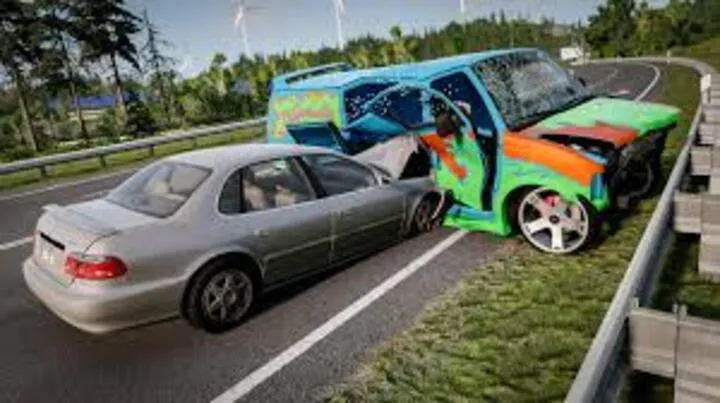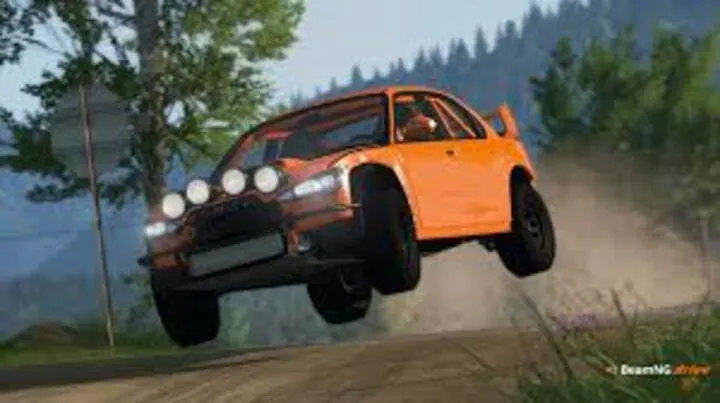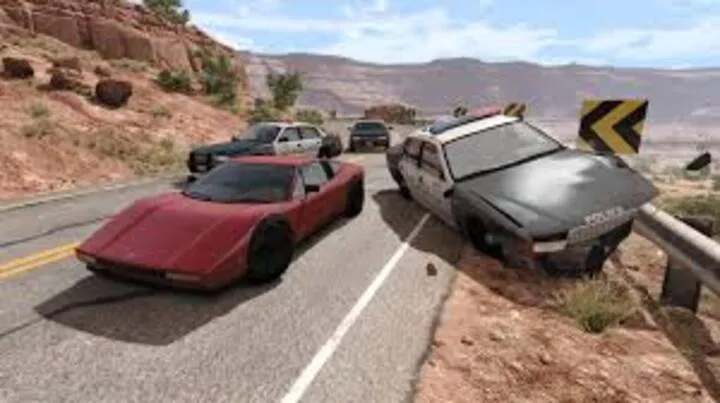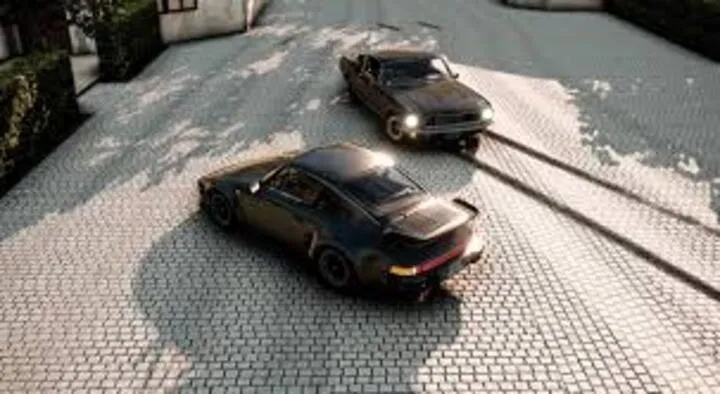BeamNG.drive is more than just a driving simulator; it is a laboratory of physics where vehicles are not just machines but dynamic, destructible objects governed by real-world laws. The hallmark feature that sets the game apart is its soft-body physics engine, which models vehicle damage, deformation, and performance in a level of detail unseen in other titles. Unlike arcade-style racers where cars bounce unrealistically, BeamNG.drive creates a living system where every collision, scrape, and rollover has tangible consequences.

This article will take you on a detailed journey into the mechanics of vehicle damage in BeamNG.drive. We’ll start from the early foundations of its simulation, explore how soft-body dynamics work, trace the process of impact in real-time, and examine the consequences on vehicle performance. Each section is arranged in logical order, capturing the complete lifecycle of vehicle damage within the game.
The Origins of Soft-Body Simulation in BeamNG.drive
BeamNG’s roots go back to a passion project by a group of developers who wanted realistic vehicle crashes rather than scripted damage models. Traditional racing games used pre-baked animations—the same dent appeared every time you hit a wall. BeamNG’s innovation was procedural damage, calculated in real time by the physics engine.
The early engine was inspired by Rigs of Rods, an open-source project that introduced soft-body physics for vehicles. However, BeamNG expanded it with finer mesh structures and more realistic weight distribution, laying the foundation for the intricate crash system that defines the game today.
The Core Principle: Soft-Body Node-Beam Structure
At the heart of BeamNG’s system is the node-beam model. Vehicles are built from a web of nodes (points) and beams (connections). These act as the car’s skeleton:
- Nodes represent physical points like joints, corners, or structural anchors.
- Beams simulate material properties such as stiffness, elasticity, and breaking thresholds.
When forces are applied—like slamming into a wall—these nodes and beams flex, compress, and snap according to real-world physics. Unlike polygonal damage overlays, BeamNG’s system means every crash is unique, calculated moment by moment.
Why Node-Beam is Revolutionary
Most games rely on rigid-body physics, where cars are solid objects. BeamNG’s node-beam method allows for continuous deformation, creating realistic crumple zones, suspension flex, and frame bending.
The Impact Process: What Happens During a Collision
When a player crashes, BeamNG runs thousands of calculations instantly. Let’s break it down:
- Initial Contact – The game detects the exact nodes in contact with an object.
- Force Distribution – Energy spreads through the beams, stressing the car’s structure.
- Deformation – Beams stretch or compress; weak points buckle.
- Breakage – At stress thresholds, beams snap, causing visible damage.
This process mirrors real-world crash dynamics, where kinetic energy dissipates across the structure, protecting passengers (or in BeamNG’s case, the vehicle’s integrity).
Structural Weak Points and Crumple Zones

Real cars are engineered with crumple zones—areas designed to deform and absorb energy. BeamNG replicates this with varying beam strengths across a vehicle. A bumper beam is weaker than a chassis beam, ensuring that front-end collisions bend the bumper first.
Examples of Structural Behavior
- Front-end impacts: Engines shift backward, hoods crumple.
- Side impacts: Doors cave in, B-pillars resist to protect occupants.
- Rollovers: Roof beams bend or collapse depending on speed and force.
By designing cars with these zones, BeamNG makes damage not only look authentic but also feel mechanically accurate.
Suspension and Wheel Damage Dynamics
Suspension systems in BeamNG are fully modeled, with springs, shocks, and linkages reacting independently. A frontal collision may not only deform the frame but also snap suspension arms, misalign wheels, or collapse steering systems.
Wheel and Tire Behavior
- Tires can puncture, deflating on impact with sharp objects.
- Rims bend under side loads, creating wobbling wheels.
- Axles twist, leading to driveline vibrations or total failure.
This ensures that a crash affects not only visuals but also drivability. A car may still run, but with compromised handling.
Drivetrain and Engine Damage
BeamNG goes beyond surface damage. A destroyed radiator leads to overheating. A bent driveshaft creates vibrations and reduced efficiency. Engine components modeled in the node-beam system react to stress, creating realistic failure chains.

Engine Damage Scenarios
- Front-end collision: Radiator punctures, leading to overheating.
- Severe impact: Engine block shifts or detaches from mounts.
- Transmission stress: Gear slips and power delivery issues.
Players must often nurse damaged vehicles, dealing with reduced acceleration, broken gears, or stalling engines.
Fire, Explosions, and Secondary Damage
While BeamNG doesn’t lean heavily on cinematic explosions, secondary effects like fires and electrical malfunctions add realism. A ruptured fuel tank may ignite, or sparks from broken wires may trigger a flame.
Secondary Damage Effects
- Fire spreads to the engine bay.
- Flames weaken structural beams, accelerating collapse.
- Smoke reduces visibility, adding gameplay challenges.
These chain reactions expand the realism, turning crashes into complex events rather than isolated impacts.
Post-Crash Handling and Performance
Perhaps the most striking feature of BeamNG is how post-crash vehicles behave. Instead of magically repairing themselves, cars remain in their damaged states, forcing players to adapt.
A bent frame pulls the vehicle to one side. A punctured tire wobbles and reduces speed. Steering may lock partially, requiring constant counter-input. This “after-crash realism” makes driving both challenging and rewarding.
Repair Systems and Testing Scenarios
BeamNG includes in-game repair functions, allowing players to reset vehicles or simulate repair attempts. Modders and scenario creators use these mechanics to design crash tests, destruction derbies, or endurance challenges.
Common Testing Scenarios
- Frontal offset crash tests: Replicating real-world safety checks.
- High-speed rollovers: Stress testing roof beams.
- Chain-reaction pileups: Observing large-scale physics interactions.
These scenarios highlight how the game doubles as both entertainment and engineering simulation.
Community Mods and Expanded Damage Systems
The BeamNG community has expanded the damage system with mods. Some add ultra-realistic material properties, while others introduce fantasy destruction (explosive cars, collapsible parts).

Examples of Modded Enhancements
- Glass shattering mods with dynamic shards.
- More detailed engine failure systems.
- Advanced fire spread mechanics.
This flexibility ensures that BeamNG remains a playground for both realism enthusiasts and creative experimenters.
The Future of Vehicle Damage in BeamNG.drive
Looking ahead, BeamNG is likely to push even deeper into realism. Developers have hinted at refining material wear, where repeated stress gradually weakens beams. AI-driven crash analysis may also allow smarter scenarios for testing.
Future expansions could include:
- Dynamic aging: Rust, fatigue, or corrosion weakening frames.
- Passenger safety simulations: Virtual dummies with injury data.
- Integration with VR haptics: Feeling crashes physically.
The future of BeamNG lies in blurring the line further between simulation and reality, making every crash not only visually stunning but scientifically educational.
Conclusion
BeamNG.drive stands as the ultimate vehicle damage simulator, not because of flashy graphics, but because of its commitment to physical authenticity. From the early node-beam structures to the layered complexity of drivetrain failures, every crash tells a story. Players don’t just witness destruction—they experience the consequences.
The game has redefined expectations for vehicle simulation, becoming a tool for fun, research, and engineering experimentation. Whether you’re a casual player fascinated by slow-motion crashes or a technical enthusiast testing suspension failures, BeamNG offers depth that no other game provides.
As the technology evolves, one truth remains: BeamNG.drive isn’t about crashing cars—it’s about understanding them, piece by piece, as they bend, break, and survive under the weight of real-world physics.

















